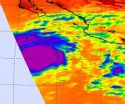(Press-News.org) BOSTON, MA (September 24, 2012) – Results of the first-ever clinical drug trial for children with Progeria, a rare, fatal "rapid-aging" disease, demonstrate the efficacy of a farnesyltransferase inhibitor (FTI), a drug originally developed to treat cancer. The clinical trial results, completed only six years after scientists identified the cause of Progeria, included significant improvements in weight gain, bone structure and, most importantly, the cardiovascular system, according to The Progeria Research Foundation (PRF) and Boston Children's Hospital. The study results were published today in Proceedings of the National Academy of Sciences (Epub ahead of print).
Progeria, also known as Hutchinson-Gilford Progeria Syndrome (HGPS), is a rare, fatal genetic disease characterized by an appearance of accelerated aging in children. All children with Progeria die of the same heart disease that affects millions of normal aging adults (atherosclerosis), but instead of occurring at 60 or 70 years of age, these children may suffer heart attacks and strokes as early as age 5 years, with the average age of death at 13 years.
"To discover that some aspects of damage to the blood vessels in Progeria can not only be slowed by the FTI called lonafarnib, but even partially reversed within just 2.5 years of treatment is a tremendous breakthrough, because cardiovascular disease is the ultimate cause of death in children with Progeria," said Leslie Gordon, M.D., Ph.D., lead author of the study, medical director for PRF, and mother of a child with Progeria. In addition, Dr. Gordon is a staff scientist at Boston Children's Hospital and Harvard Medical School, and associate professor at Hasbro Children's Hospital and Alpert Medical School of Brown University.
Results Yield Improvements in One or More Study Measures for All Children
Twenty-eight children from sixteen countries participated in the two-and-a-half year drug trial, representing 75 percent of known Progeria cases worldwide at the time the trial began. Of those, 26 are children with the classic form of Progeria. The children traveled to Boston every four months to receive comprehensive medical testing through Boston Children's Hospital's Clinical and Translational Study Unit.
Treatment consisted of the FTI lonafarnib, supplied by Merck & Co., given to children orally, twice-a-day over the course of the study, under the supervision of principal investigator Mark Kieran, M.D., Ph.D., director of pediatric medical neuro-oncology at the Dana-Farber/Children's Hospital Cancer Center.
The research team, which included specialists at Boston Children's Hospital, Brigham & Women's Hospital and Dana-Farber Cancer Institute, evaluated the children's rate of weight gain compared to their pre-therapy rate as the primary outcome because children with Progeria experience severe failure to thrive, and have a consistent, very slow linear rate of weight gain over time. Researchers also examined arterial stiffness (a predictor of heart attack and stroke in the general population), bone density and rigidity (indicators of osteoporosis). Every child completing the study showed improvement in an ability to gain additional weight, increased flexibility of blood vessels or improved bone structure.
Results included improvement in one or more of the following areas:
Weight: One in three children demonstrated a greater than 50 percent increase in annual rate of weight gain or switched from weight loss to weight gain, due to increased muscle and bone mass.
Bone Structure: On average, skeletal rigidity (which was highly abnormal at trial initiation) improved to normal levels after FTI treatment.
Cardiovascular: Arterial stiffness, strongly associated with atherosclerosis in the general aging population, decreased by 35 percent. Vessel wall density also improved with treatment.
Following the 2003 discovery of the gene that causes Progeria, researchers identified FTIs as a potential drug treatment for Progeria. Children with Progeria have a genetic mutation that leads to the production of the protein progerin, which is responsible for Progeria. Progerin blocks normal cell function and part of its toxic effect on the body is caused by a molecule called a "farnesyl group," which attaches to the progerin protein. FTIs act by blocking the attachment of the farnesyl group onto progerin.
"In the early stages of planning for this clinical trial, we realized that my team's experience using FTIs to treat children with brain cancer could bring together PRF's preclinical research efforts and the expertise we needed to study the drug in children with Progeria," said Kieran, the study's senior author and associate professor of Pediatrics at Harvard Medical School. "The premise behind studying this drug was that by stopping the attachment of the farnesyl group onto progerin in children with Progeria, progerin may be inactivated, reducing some effects of the disease."
"PRF provides a model for disease research organizations, and is a good example of successful translational research, moving from gene discovery to clinical treatment at an unprecedented pace," added Dr. Kieran.
Since PRF's founding in 1999, the organization and its scientific partners have identified the genetic mutation that causes the disease, funded preclinical research and funded clinical trials. A second clinical trial, funded by the National Institutes of Health and PRF, is currently underway and more trials are expected to follow.
"The partnership between The Progeria Research Foundation, the research team and these courageous families was essential for success," said Dr. Gordon. "It required identifying children and their home doctors from around the globe, obtaining the essential pre-trial clinical information, transporting families to and from Boston, supplying translators both inside and outside of the hospital setting, and putting together a multidisciplinary clinical team to assess treatment effects. But it was all worth it, and I believe we have set in motion a blueprint for successful treatment trials for children with Progeria and for other rare diseases."
"The results of this study provide our family with excitement and hope for Megan's future," said Sandy Nighbor, mother of Megan, a 12-year-old child who participated in the clinical trial. "We're grateful to The Progeria Research Foundation and all of the doctors for their commitment to helping my daughter and all children with Progeria."
Progeria Linked to Normal Aging Process
Previous research shows that progerin is also produced in the general population and increases in the body with age. A number of studies successfully linked progerin with normal aging, including a causal link between progerin and genetic instability, specifically telomere dysfunction in the aging process. Researchers plan to continue researching the effect of FTIs, which may help scientists learn more about cardiovascular disease that affects millions, as well as the normal aging process.
"One of the main reasons we achieved breakthrough results in this first trial is because of the tremendous supporters who provided funding, and helped get us one step closer to achieving our ultimate goal – a cure for Progeria," said Audrey Gordon, Executive Director of PRF. "Every donation makes a difference. With continued support, we will fund research that will not only allow children with Progeria around the world to live long and healthy lives, but may also advance our understanding of the normal aging process that affects us all."
###
About The Progeria Research Foundation (PRF)
The Progeria Research Foundation (PRF) was established in 1999 to find the cause, treatment and cure for Progeria – a rapid aging disease that causes children to die from heart disease or stroke at an average age of 13 years. In the past 13 years, research conducted in partnership with PRF has identified the gene that causes Progeria and possible treatments. PRF funded and coordinated this first-ever Progeria clinical trial. PRF is currently funding a clinical trial in which children with Progeria receive FTI plus two additional medications to slow the progression of Progeria. PRF continues to identify more children who can benefit from the programs and services that it provides while helping advance research towards treatment and cure. To learn more about Progeria and what you can do to help, please visit www.progeriaresearch.org.
About Boston Children's Hospital
Boston Children's Hospital is home to the world's largest research enterprise based at a pediatric medical center, where its discoveries have benefited both children and adults since 1869. More than 1,100 scientists, including nine members of the National Academy of Sciences, 11 members of the Institute of Medicine and nine members of the Howard Hughes Medical Institute comprise Boston Children's research community. Founded as a 20-bed hospital for children, Boston Children's today is a 395 bed comprehensive center for pediatric and adolescent health care grounded in the values of excellence in patient care and sensitivity to the complex needs and diversity of children and families. Boston Children's also is the primary pediatric teaching affiliate of Harvard Medical School. For more information about research and clinical innovation at Boston Children's, visit: http://vectorblog.org/.
About the Dana-Farber/Children's Hospital Cancer Center
Dana-Farber/Children's Hospital Cancer Center (DF/CHCC) combines the strengths of Dana-Farber Cancer Institute, a world-class cancer institute, and Boston Children's Hospital, an internationally known pediatric hospital. For over 60 years, these two Harvard Medical School affiliates have provided comprehensive care for children and adolescents with cancer. Committed to conducting research to better understand and treat childhood cancers, DF/CHCC is the Pediatric Oncology Experimental Therapeutics Investigator Consortium's (POETIC) only Phase I Clinical Trial site in New England, and is home to one of the world's most sophisticated and accomplished Pediatric Stem Cell Transplantation centers. DF/CHCC also offers comprehensive transitional and long-term survivorship programs to childhood cancer survivors of all ages.
First-ever treatment for rare childhood aging disease shows improvement in all trial participants
Drug originally developed for cancer proves effective for children with progeria
2012-09-25
ELSE PRESS RELEASES FROM THIS DATE:
Florida State University chemist may hold key to building a better toxin mousetrap
2012-09-25
TALLAHASSEE, Fla. — A Florida State University chemist's work could lead to big improvements in our ability to detect and eliminate specific toxins in our environment.
Featured on the cover of the prestigious Journal of the American Chemical Society (JACS), Sourav Saha's specialized work to strip electrons from the toxic chemical known as fluoride is producing a variety of unique results.
"I started out with the very basic premise of trying to find new ways to detect toxic fluoride in solutions," said Saha, an assistant professor of chemistry at Florida State. "As ...
Treating ovarian cancer: New pathways through genetics
2012-09-25
This press release is available in French.Montreal, September 24, 2012 – A new discovery that sheds light on the genetic make up of ovarian cancer cells could explain why some women survive longer than others with this deadly disease. A multi-disciplinary team led by the Research Institute of the McGill University Health Centre (RI MUHC), in collaboration with the Lady Davis Institute of the Jewish General Hospital and the University of Montreal Hospital Research Centre, has identified genetic patterns in ovarian cancer tumours that help to differentiate patients based ...
Exposing cancer's lethal couriers
2012-09-25
Malignant cells that leave a primary tumor, travel the bloodstream and grow out of control in new locations cause the vast majority of cancer deaths. New nanotechnology developed at Case Western Reserve University detects these metastases in mouse models of breast cancer far earlier than current methods, a step toward earlier, life-saving diagnosis and treatment.
A team of scientists, engineers and students across five disciplines built nanochains that home in on metastases before they've grown into new tissues, and, through magnetic resonance imaging, detect their locations. ...
White matter, old dogs, and new tricks at Dartmouth
2012-09-25
Most people equate "gray matter" with the brain and its higher functions, such as sensation and perception, but this is only one part of the anatomical puzzle inside our heads. Another cerebral component is the white matter, which makes up about half the brain by volume and serves as the communications network.
The gray matter, with its densely packed nerve cell bodies, does the thinking, the computing, the decision-making. But projecting from these cell bodies are the axons—the network cables. They constitute the white matter. Its color derives from myelin--a fat that ...
Bone marrow holds secrets for treating colitis and Crohn's
2012-09-25
EAST LANSING, Mich. — Michigan State University researchers have unlocked secrets in bone marrow that could lead to improved treatments for colitis and Crohn's disease.
The results, featured in the current issue of Proceedings of the National Academy of the Sciences, show that the havoc inflammatory bowel diseases wreaks on the digestive tract is mirrored in bone marrow. Early indications also show that the disorders of the gut could potentially be treated through the bone marrow, said Pam Fraker, MSU University Distinguished Professor of biochemistry and molecular biology.
"It's ...
MRI helps identify patients with prostate cancer who may benefit from active surveillance
2012-09-25
Philadelphia, PA, September 24, 2012 – PSA screening has resulted in improved prostate cancer survival, but the high rate of diagnosis and treatment side effects raise concerns about overtreatment. In the quest to prevent overtreatment, "active surveillance" has emerged as a plausible option, encouraged for men whose tumors may not need immediate treatment and may never progress to more serious illness. Appropriate criteria for selecting patients for active surveillance are continuously debated. A group of investigators from Memorial Sloan-Kettering Cancer Center in ...
Feeling guilty versus feeling angry -- who can tell the difference?
2012-09-25
When you rear-end the car in front of you at a stoplight, you may feel a mix of different emotions such as anger, anxiety, and guilt. The person whose car you rear-ended may feel angered and frustrated by your carelessness, but it's unlikely that he'll feel much guilt.
The ability to identify and distinguish between negative emotions helps us address the problem that led to those emotions in the first place. But while some people can tell the difference between feeling angry and guilty, others may not be able to separate the two. Distinguishing between anger and frustration ...
Yale researchers call for specialty metals recycling
2012-09-25
New Haven, Conn. -- An international policy is needed for recycling scarce specialty metals that are critical in the production of consumer goods, according to Yale researchers in Science.
"A recycling rate of zero for specialty metals is alarming when we consider that their use is growing quickly," said co-author Barbara Reck, a research scientist at the Yale School of Forestry & Environmental Studies.
Specialty metals, which include rare earth elements such as indium, gallium and germanium, account for more than 30 of the 60 metals in the periodic table. Because ...
NASA's satellite saw 'power-trigger' around Hurricane Miriam's center
2012-09-25
ASA's Aqua satellite revealed a large area of powerful thunderstorms around the center of Tropical Storm Miriam on Sept. 23 as it tracked through the Eastern Pacific Ocean. That power was the trigger that helped Miriam rapidly intensify into a major hurricane on Sept. 24.
NASA's Aqua satellite passed over the eastern Pacific Ocean on Sept. 23 and the Atmospheric Infrared Sounder (AIRS) instrument captured an infrared image of Tropical Storm Miriam's cloud top temperatures. Tropical Storm Miriam is born that day, about 640 miles (1,025 km) south-southeast of the southern ...
NASA's Global Hawk and satellites see tropical storm Nadine turning around
2012-09-25
Tropical Storm Nadine is turning around in two ways. When NASA's Global Hawk flew over the storm it learned that the storm was not transitioning into an extra-tropical storm. Now, NASA satellites see that Nadine is physically turning its direction, and heading back to the west-northwest and away from land.
The fifth science flight of NASA's Global Hawk concluded when the aircraft landed at NASA's Wallops Flight Facility, Wallops Island, Va. on Sunday, Sept. 23 after flying over Tropical Storm Nadine in the Eastern Atlantic Ocean. The Hurricane and Severe Storms Sentinel ...
LAST 30 PRESS RELEASES:
First Editorial of 2026: Resisting AI slop
Joint ground- and space-based observations reveal Saturn-mass rogue planet
Inheritable genetic variant offers protection against blood cancer risk and progression
Pigs settled Pacific islands alongside early human voyagers
A Coral reef’s daily pulse reshapes microbes in surrounding waters
EAST Tokamak experiments exceed plasma density limit, offering new approach to fusion ignition
Groundbreaking discovery reveals Africa’s oldest cremation pyre and complex ritual practices
First breathing ‘lung-on-chip’ developed using genetically identical cells
How people moved pigs across the Pacific
Interaction of climate change and human activity and its impact on plant diversity in Qinghai-Tibet plateau
From addressing uncertainty to national strategy: an interpretation of Professor Lim Siong Guan’s views
Clinical trials on AI language model use in digestive healthcare
Scientists improve robotic visual–inertial trajectory localization accuracy using cross-modal interaction and selection techniques
Correlation between cancer cachexia and immune-related adverse events in HCC
Human adipose tissue: a new source for functional organoids
Metro lines double as freight highways during off-peak hours, Beijing study shows
Biomedical functions and applications of nanomaterials in tumor diagnosis and treatment: perspectives from ophthalmic oncology
3D imaging unveils how passivation improves perovskite solar cell performance
Enriching framework Al sites in 8-membered rings of Cu-SSZ-39 zeolite to enhance low-temperature ammonia selective catalytic reduction performance
AI-powered RNA drug development: a new frontier in therapeutics
Decoupling the HOR enhancement on PtRu: Dynamically matching interfacial water to reaction coordinates
Sulfur isn’t poisonous when it synergistically acts with phosphine in olefins hydroformylation
URI researchers uncover molecular mechanisms behind speciation in corals
Chitin based carbon aerogel offers a cleaner way to store thermal energy
Tracing hidden sources of nitrate pollution in rapidly changing rural urban landscapes
Viruses on plastic pollution may quietly accelerate the spread of antibiotic resistance
Three UH Rainbow Babies & Children’s faculty elected to prestigious American Pediatric Society
Tunnel resilience models unveiled to aid post-earthquake recovery
Satellite communication systems: the future of 5G/6G connectivity
Space computing power networks: a new frontier for satellite technologies
[Press-News.org] First-ever treatment for rare childhood aging disease shows improvement in all trial participantsDrug originally developed for cancer proves effective for children with progeria



